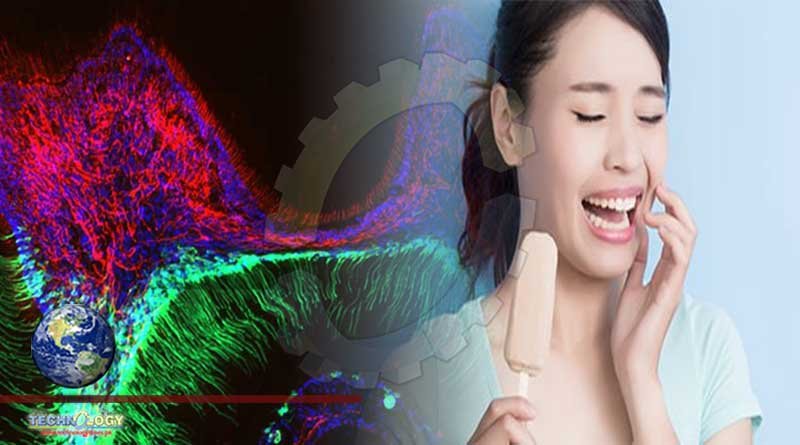More than a decade ago, Dr Katharina Zimmerman, discovered that cells producing a protein called TRPC5 were sensitive to cold.

There is nothing quite like the peculiar, bone-jarring reaction of a damaged tooth exposed to something cold – a bite of ice cream, or a cold drink – and suddenly, that sharp, searing feeling, like a needle piercing a nerve.
Researchers have known for years that this phenomenon results from damage to the tooth’s protective outer layer. But just how the message goes from the outside of one’s tooth to the nerves within it has been difficult to uncover.
Biologists on Friday reported in the journal Science Advances that they have identified an unexpected player in this painful sensation: a protein embedded in the surface of cells inside the teeth. The discovery provides a glimpse of the connection between the outer world and the interior of a tooth, and could one day help guide the development of treatments for tooth pain.
More than a decade ago, Dr Katharina Zimmerman, now a professor at Friedrich-Alexander University in Germany, discovered that cells producing a protein called TRPC5 were sensitive to cold.
When things got chilly, TRPC5 popped open to form a channel, allowing ions to flow across the cell’s membrane. Ion channels like TRPC5 are sprinkled throughout our bodies, Dr Zimmerman said, and they are behind some surprisingly familiar sensations.
For instance, if your eyes start to feel cold and dry in chilly air, it is a result of an ion channel being activated in the cornea.
She wondered which other parts of the body might make use of a cold receptor such as TRPC5.
Within the protective shell of their enamel, teeth are made of a hard substance called dentin that is threaded with tiny tunnels. At the heart of the dentin is the tooth’s soft pulp, where nerve cells and cells called odontoblasts, which manufacture dentin, are intertwined.
She and her colleagues looked to see whether mice engineered to lack the TRPC5 channel still felt tooth pain as normal mice did. They found that these mice, when they had damage to their teeth, did not behave as if anything was amiss.
Her co-author, Dr Jochen Lennerz, a pathologist at Massachusetts General Hospital, checked human teeth for signs of the ion channel and found it in their nerves and other cells. Over many years, the researchers constructed a way to precisely measure the nerve signals travelling out of a mouse’s damaged molar.
As it happens, one substance that keeps TRPC5 from opening is eugenol, the main ingredient in oil of cloves, a traditional treatment for toothache. Although the Food and Drug Administration in the United States is equivocal about eugenol’s effectiveness, if it does lessen the pain for some people, it may be because of its effect on TRPC5.
Originally published at The straits times
